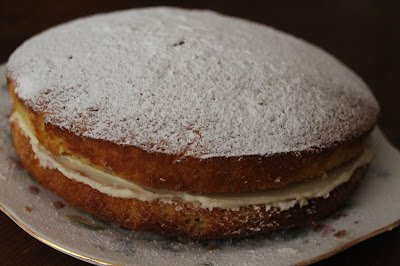We've recently started having poetry teas but even before this, poetry has been something that I have enjoyed reading to the children. These ten poems are some of our favourites. They are all available on line hence the links. This list caused a great deal of discussion and one of my children wanted to have a much, much longer list-perhaps for another time!
Cats sleep anywher,e by Eleanor Farjeon. This is a great poem for cat lovers; very easy to learn and true to life.
Excuses, by Gareth Owen, is a poem that I read aloud almost daily as the children love its humour.
Chocolate cake, by Michael Rosen, is relatively new to us but has become popular. Children may appreciate parallels between this and the story of Bad Harry's party in My Naughty Little Sister.
Stopping by woods on a snowy evening, by Robert Frost, is best read with the beautiful illustrations by Susan Jeffers.
Sand in the sandwiches, by Shirley Hughes, is a poem that gets quoted every time we go to the sea and comes from the lovely anthology Out and about.
What is pink?, by Christina Rossetti, was about the first poem one of my children learned.
The Lion and the Unicorn is a traditional rhyme. This link gives fascinating information as to its origin.
Macavity: the mystery cat, by T.S. Eliot, is probably the most famous poem from Old Possum's Book of Practical Cats.
The Painting Lesson, by Trevor Harvey, always causes amusement and comments about Mum's appearance!
Buckingham Palace, by A.A. Milne,is a poem that I remember from my childhood.
If you enjoyed this post you may like to follow Delivering Grace by Google Friend Connect, G+,Facebook, Pinterest or e-mail.
Cats sleep anywher,e by Eleanor Farjeon. This is a great poem for cat lovers; very easy to learn and true to life.
Excuses, by Gareth Owen, is a poem that I read aloud almost daily as the children love its humour.
Chocolate cake, by Michael Rosen, is relatively new to us but has become popular. Children may appreciate parallels between this and the story of Bad Harry's party in My Naughty Little Sister.
Stopping by woods on a snowy evening, by Robert Frost, is best read with the beautiful illustrations by Susan Jeffers.
Sand in the sandwiches, by Shirley Hughes, is a poem that gets quoted every time we go to the sea and comes from the lovely anthology Out and about.
What is pink?, by Christina Rossetti, was about the first poem one of my children learned.
The Lion and the Unicorn is a traditional rhyme. This link gives fascinating information as to its origin.
Macavity: the mystery cat, by T.S. Eliot, is probably the most famous poem from Old Possum's Book of Practical Cats.
The Painting Lesson, by Trevor Harvey, always causes amusement and comments about Mum's appearance!
Buckingham Palace, by A.A. Milne,is a poem that I remember from my childhood.
If you enjoyed this post you may like to follow Delivering Grace by Google Friend Connect, G+,Facebook, Pinterest or e-mail.





































